Type Dam failure Non-fatal injuries 16 Date 5 November 2015 Injuries 16 | Cause not yet released Missing 2 Total number of deaths 17 Location Minas Gerais | |
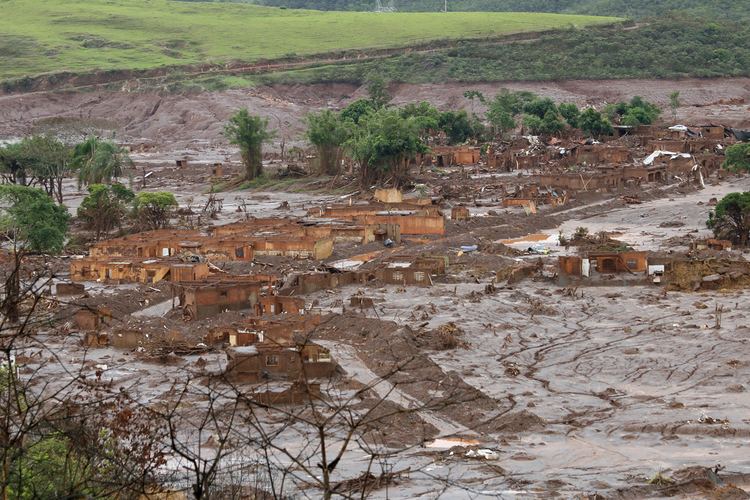 | ||
Property damage two villages affected, around 200 homes destroyed Participants Samarco, Vale, BHP Billiton Ltd. | ||
Rompimento barragem samarco bento rodrigues momento exato
The Bento Rodrigues dam disaster occurred on 5 November 2015, when an iron ore tailings dam in Bento Rodrigues, a subdistrict of Mariana, Brazil, suffered a catastrophic failure, causing flooding and at least 17 deaths. At least 16 people have been injured.
Contents
- Rompimento barragem samarco bento rodrigues momento exato
- Brazil dam collapse
- Overview
- Incident
- Contamination of Rio Doce
- Contamination of southern Atlantic ocean
- Investigation of the causes
- Sanctions to Samarco
- Legal consequences
- National
- International
- References
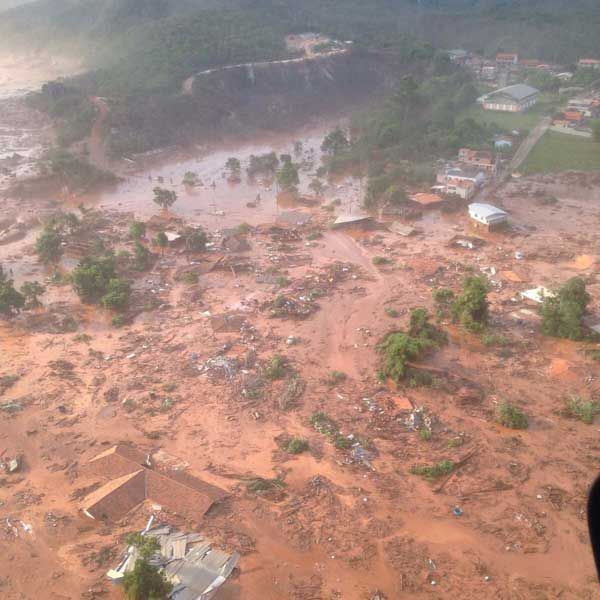
About 60 million cubic meters of iron waste flowed into the Doce River. Toxic brown mudflows reached the Atlantic Ocean 17 days later. The total impact and environmental consequences to the river and the beaches near its mouth, or to the wildlife are still unclear. This incident has been described as the worst environmental disaster in Brazil's history.
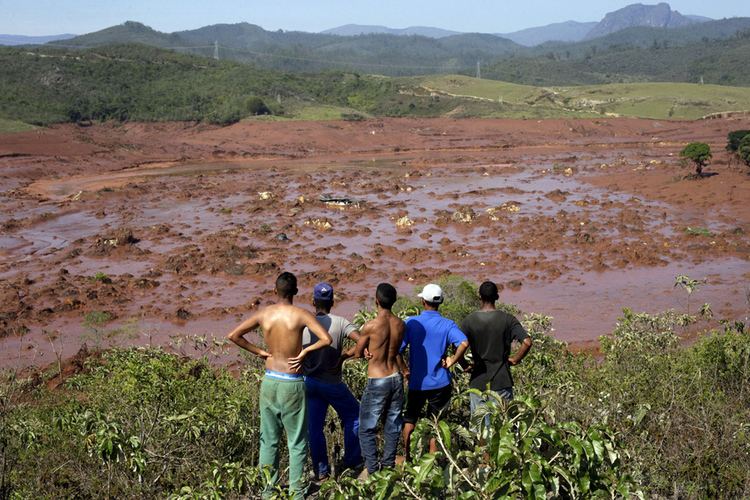
The dam is a property of Samarco, a joint venture between Vale and BHP Billiton. Initially it was speculated that the causes for the collapse would be some weaknesses in the dam's structure that were described in a report of 2013 from the Brazilian authorities. BHP Billiton denies this version, and the causes of the incident are still being investigated.
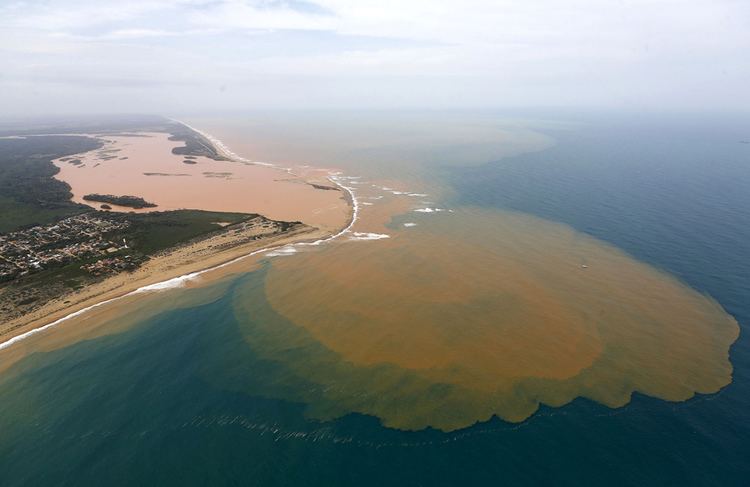
Brazil dam collapse
Overview

Controlled by Samarco Mineração SA, the Fundão and Santarém dams are part of the Germano mine located in the district of Santa Rita Durão, a municipality of Mariana. The tailings dams were built to accommodate the waste resulting from the extraction of iron ore taken from extensive mines in the region.
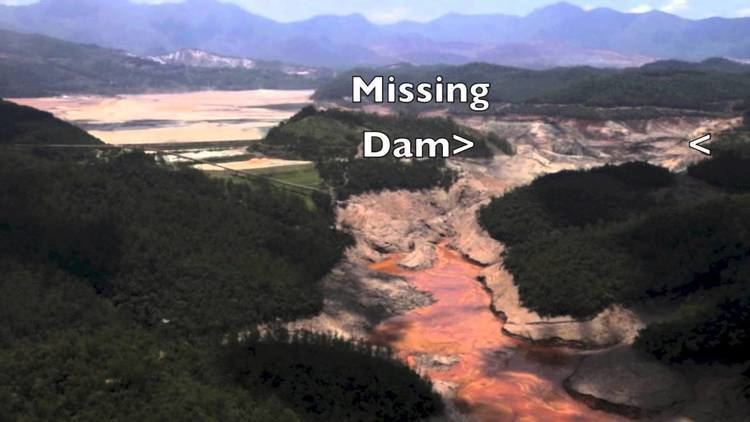
In January 2016, the leakage of internal documents from 14 months before the disaster revealed that Samarco had been warned about the possibility of the dam collapses. Joaquim Pimenta de Ávila, who was regarded as one of the foremost tailing dam engineers in Brazil, had been contracted by Samarco between 2008 and 2012 to design and oversee the construction of Fundão. From 2013, he was hired part-time as a consultant to inspect the dam. A technical report of Ávila from September 2014 lists severe structural problems (cracks) on the dam, and measures to mitigate them, the main one being the construction of a buttress.

Samarco claims to have implemented all the recommendations from Ávila. The dam was in the process of being heightened when the landfill reached its maximum capacity and began to leak, as the reservoir had already reached its limit point. However, the company failed to comment specifically about the buttress. Furthermore, Samarco claims that it was never warned about the severity of the structural damages, nor about imminence of a catastrophic failure.
Incident
At approximately 3:30pm on the afternoon of 5 November, the Fundão dam presented a leak. Immediately, a team of outsourced employees was sent to the scene. They tried to mitigate the leak by deflating part of the reservoir. Around 4:20pm a rupture occurred, releasing a large volume of toxic sludge into the Santarém river valley. The subdistrict of Bento Rodrigues, which lies on about 2.5 kilometers of the valley below, was almost entirely flooded by the cascade of mud that ensued after the disaster at the dam. Other villages and districts that are located in the Gualaxo river valley, also in the region of Mariana, were hit with minor damage.
Bento Rodrigues is situated on unpaved back roads, which are the only available means of land travel between it and the other districts and the seat of the municipality. Because of its precarious access location, the flooding made Bento Rodrigues completely inaccessible by road, which hindered firefighters' access to the rescue. The only option for transport into or out of the location was via helicopter. There was a school in the area where the flood occurred, and the teachers were able to remove the students before school.
To aggravate the situation, the enterprise and the neighboring communities did not have a contingency plan or evacuation routes, which would have allowed the residents to evacuate in a timely manner to more secure regions.
Around 600 people have been evacuated to the nearby town of Mariana, and troops have been deployed to assist. The dams are owned by a joint venture of BHP Billiton , an Anglo-Australian multinational mining, metals and petroleum company headquartered in Melbourne, Australia and the world's largest mining company, and Vale SA., the third-largest mining company in the world and the Public Eye People's Worst Company award winner of 2012.
There are concerns about contamination of the nearby Rio Gualaxo do Norte, a tributary of the Doce River, due to the toxic substances stored at the facility.
Contamination of Rio Doce
At around 6:30pm on the day of 5 November, the tailings of iron ore reached the Rio Doce. The river basin has a drainage area of about 86,715 square kilometers, with 86% in Minas Gerais and Espírito Santo. In total, the river covers 230 municipalities that use its bed for subsistence.
According to biologist and ecologist Andrew Ruschi, who studies marine biology at the Estação Biologia Marinha Augusto Ruschi in Santa Cruz, Espírito Santo, the waste will take at least decades to dilute to levels anywhere near previous levels.
The waste also reached the hydroelectric power plant of Risoleta Neves in Santa Cruz do Escalvado within 100 kilometers of Mariana. According to the company that runs the power plant, its functioning has not been affected.
On 9 November, the city of Governador Valadares stopped the water intakes due to the mud on the Rio Doce. The next day, a State of Public Calamity was decreed in response to the water shortage in the city. According to analyses carried out in the city, the mud contains greater than acceptable concentrations of heavy metals, substances harmful to health, such as arsenic, lead and mercury.
Contamination of southern Atlantic ocean
On 22 November, the waste reached the Atlantic Ocean. The toxic mud is spreading across the Espírito Santo coast, where cities closed down access to beaches.
On 7 January 2016, the waste reached the southern Bahia littoral zone. Environmentalists follow closely the impact to the Abrolhos Marine National Park wildlife. The park is considered of vital importance to the Brazilian ecosystem since it hosts the major marine biodiversity in the whole southern Atlantic ocean.
Investigation of the causes
On the first quarter of November 2015, the Brazilian Chamber of Deputies and the state chambers of Minas Gerais e Espírito Santo created, each one, a special commission to follow the case, and the actions taken. According to the press, many of the deputies that composed such commissions had received donations from Vale to finance their campaigns. Such donations, summing up to R$ 2.6 millions are legal, and were reported by the then-candidates to the Brazilian Election Justice. However, it has raised high criticism that the deputies' participation are clearly biased.
Sanctions to Samarco
The Minas Gerais government suspended Samarco's activities immediately after the disaster.
Next, the Brazilian government fined Samarco in R$250 million (US$66.3million) for the incident. The fine is preliminary and could be higher if the two companies were found guilty of water pollution and damages.
In January 2016, the Brazilian government and Samarco reached the agreement in a fine of R$20 billion (US$4.8 billion). The penalty does not include compensation to people affected by the disaster, and the cost of recovering the polluted area.
Legal consequences
In October 2016 it was reported that Brazilian prosecutors had filed homicide charges against 21 people including top executives of the mining companies Vale and BHP Billiton.
National
The city immediately began a campaign to collect donations for the homeless, stressing the urgent need for donations of toothbrushes, towels, glasses, cutlery, disposable dishes and especially drinking water. Also a bank account was opened to receive donations in cash. Additionally, all municipal events since the day of the disaster until 16 November have been canceled. The note from the Mayor's Office said that "at this point, the city of Mariana is focused on rescue work and support to hit".
The Federal Government, through the Minister's Chief of Staff, Jaques Wagner, put the Federal forces at the disposal of the State of Minas Gerais. The Minister came into contact with the Governor, Fernando Pimentel, to put the Federal forces. Jaques Wagner announced President Dilma Rousseff on accident before loading it back from a trip to Brazil to Brasília.
The Roman Catholic Archdiocese of Mariana said: "We express our most heartfelt sympathy to the families who have had their homes and property destroyed and those who mourn the death of their loved ones, victims of this disaster of incalculable proportions. The point is to unite efforts to minimise the distress and suffering of all those affected by this tragedy. We call upon our communities to provide support to victims. [...]. We pray to God to strengthen and comfort, with your generous love, all who have been affected by this accident". In addition to at diocese, the Diocese of Itabira and Three Lakes and the East Regional II CNBB, comprising the territories of the States of Minas Gerais and Espírito Santo, also issued notes of solidarity with those affected by tragedy.
A football match between Cruzeiro and São Paulo on 8 November in Belo Horizonte hosted a collection of resources to help the victims.
International
A report by experts of the United Nations contradicted repeated statements by the Brazilian government and the involved mining companies that the released chemicals were harmless. Instead, the report indicated that the released mud contained "high levels of toxic heavy metals and other toxic chemicals" and also criticized the slow release of information.
The French spokesman for the Ministry of Foreign Affairs, and Romain Nadal expressed their condolences,"We were told with emotion of the disruption of the mining dams in the State of Minas Gerais in the Southeast region," said the spokesman.
North American band Pearl Jam, who performed in Belo Horizonte on 20 November, promised to donate the proceeds of the concert to victims of the disaster. Singer Eddie Vedder also gave a speech calling for harsh punishments to be applied to Samarco and others involved.
